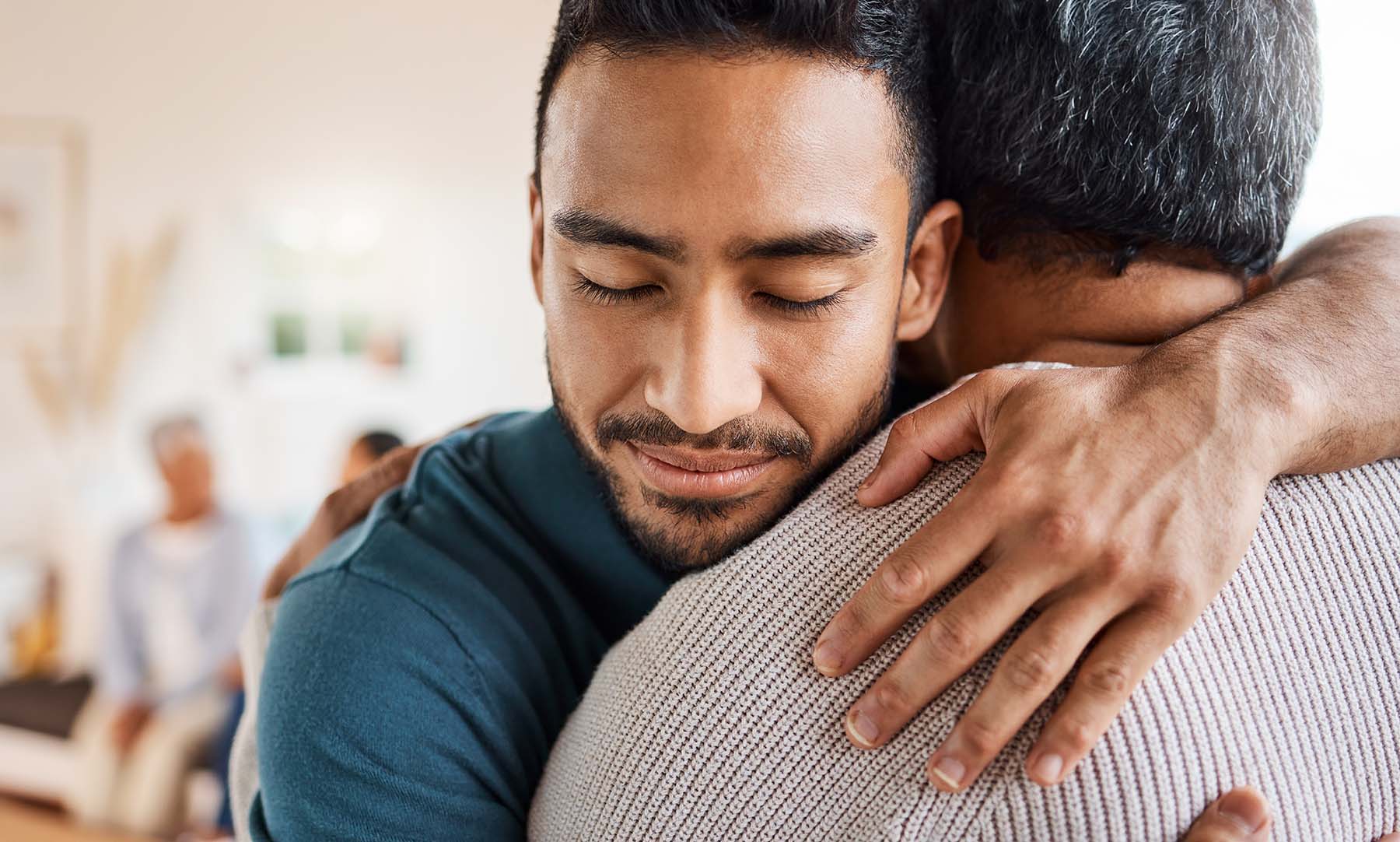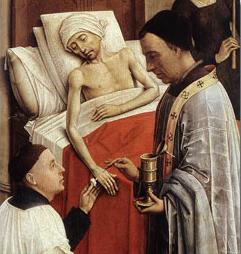This is the first new article on the new Frank Answers blog. I’m writing at a time when the COVID-19 pandemic is waning in its impact on our social life, but it’s not gone. Psychologists comment on how the pandemic has exacerbated a growing sense of isolation and loneliness in American society, in spite of the internet and social platforms. During the pandemic we became even more reliant on these media for communication, information, education, business, shopping, and even worship. All of this has diminished personal and social contact with other people.
Today’s date, May 31, commemorates the visit of one young pregnant woman, Mary the mother of Jesus, to an older pregnant woman, her cousin Elizabeth, the mother of Jesus’ six-month older cousin John the Baptist. Apart from the theological significance of this Visitation, the fact that two pregnant women got together reminds us of the importance of human body-to-body connections.

In this article I want to address the issue of returning to in-person body-to-body activities now that we seem to be transcending, if not completely getting past, the COVID-19 pandemic. People are venturing out into a social world that was largely off limits to them during the pandemic, either by direction of health authorities or their own caution about not contracting the novel coronavirus. When asked what people missed most during the pandemic with all its social mitigations and anxieties, many responded that they missed human touch.
A timely feature article in the June 2022 issue of National Geographic that has just been released is “The Power of Touch.” Research has shown that touch and connections with others keeps us healthy, beginning in infancy. Babies thrive on being connected to their mother, or father, or another surrogate human being. Anatomy teaches us that we are wrapped in “an incredibly complex sheet covered with sensors”—our skin, the largest organ in the body. The sensors in the skin send information to the brain that helps us respond to what we are sensing. To be deprived of touch and connection with others is simply unhealthy mentally and physically. It’s understandable that the loss of touch and connection with others has been one of the greatest privations of the pandemic.

There aren’t many human activities that require both connection and touch for the human to flourish. The three that come immediately to mind are worship, sex, and massage. This isn’t surprising because all three require bodily interaction that virtual technology cannot provide. Also, there is a mystical quality to all three: we are present to the other in the experience of worship, sex, and massage that all become more intimate through touch.
Pastors report that people missed the greeting of peace in the liturgy when they were in Zoom church. Zoom enabled congregants to remain connected electronically, but not through touch. Worshipers missed the opportunity to great each other not just with words or with “signs of peace,” but with a handshake, hug, or even a kiss. Touch, when connecting with others, releases oxytocin (not to be confused with OxyContin, the painkilling drug). Oxytocin is a hormone produced by the human brain that contributes to feelings of trust for the people around us and produces bonding. It’s known to be released when people are singing together. This is why group singing, in a choir or congregation, produces feelings of connections with others and contributes to a sense of community.

Certain aspects of worship could be continued on Zoom: those aspects that involved talking (reading, preaching, praying, performing). Singing together was impossible unless one liked a cacophony.

But the sacraments cannot be administered on Zoom. The sacraments that are our Lord’s instituted means of grace, and are central liturgical celebrations, but they require bodies to receive them.


Health authorities recommended virtual worship and also virtual sex. Oxytocin is released in the brain when two people have sex and orgasm together, but not when they have orgasms in solo sex. It takes two who connect physically with another to release oxytocin. And just as the public health social mitigations during the pandemic recommended that people who attend public worship in person wear a mask and sit six feet apart, so the guidance offered about sex by public health agencies and the Mayo Clinic advised no kissing, no hugging, and, if you must have sexual intercourse, do it doggie style so you are not facing each other. But they advised that it would be safer to practice masturbation or send nude selfies on social platforms like Snap. Photos have been published of people hugging each other through shower curtains or sheets of plastic.

The fact is that we need skin-to-skin touch to connect with one another, even if it’s no more than clasping hands during the greeting of peace or having the minister’s hand touch yours when administering the bread of Holy Communion or in rites that incorporate the laying on of hands such as confirmation and healing. We need to be able to hug and kiss a loved one to engender a sense of wellbeing.

At the moment, with COVID-19 variants emerging one after another and vaccines needing boosters, we are uncertain about how many social mitigations can be relaxed and when they can be restored. To mask or not to mask, that is the question. With the increasing number of “mask optional” venues, it becomes an existential question whether one will wear a mask or not.
Many of us now live in a hybrid world, and the in-person and online options are likely to remain for the foreseeable future. The level of risk tolerance varies from person to person. But we need to be connected bodily with other worshipers, students, co-workers, and lovers. We need to recover connections through touch, skin-to-skin, to flourish personally and as a society.
In the meantime, massage studios are also reopening and massage therapists are taking clients who are vaccinated. They take precautions about sanitizing surfaces and washing sheets and wearing masks as needed. Massage is also a form of touch and connection. The massage therapist touches the skin with all its sensors throughout the body that send information to the brain that helps us respond to what we are sensing. You are connected with the massage therapist who lays hands on your body and your body feels and responds to that touch. Touch-on-touch, skin-on-skin, is occurring in massage, even if you don’t touch the massage therapist with your own hands. All of our skin has touch sensors.

Massage is a healing touch that can relax the tensions caused by living through an anxiety-producing pandemic, whether we are aware of those tensions or not. My massage therapist often exposes tensions and muscular tightness that I didn’t even know I had until he goes deep below the surface. Massage is about more than relaxation. Ancient people learned that massaging oils into the skin and joints helps to relieve stiffness and improves blood circulation. Since humans are social animals, we thrive on connecting with one another through touch, just as other animals do. By having another person apply oil to the body, and stroke our skin and squeeze our muscles, massage was born.

We need the healing touch of massage as well as worship in the flesh in human community and making love to another in the flesh in order to restore our wholeness of body and mind as we come out of the social mitigations of the pandemic and begin the task of reconstructing social living. These are themes that I will strike over and over again as I begin to populate this blog with previous articles and answer new questions. The body will be a central theme throughout because we are embodied creatures. The way to the mind as well as the soul is through the body. The body needs connection with other bodies and touching other bodies and being touched by them.
Pastor Frank
P.S. I couldn’t resist adding this photo of two male dancers from American Ballet Theatre connecting and touching in the spring woods as new life is bursting forth in our pandemic-weary world.






